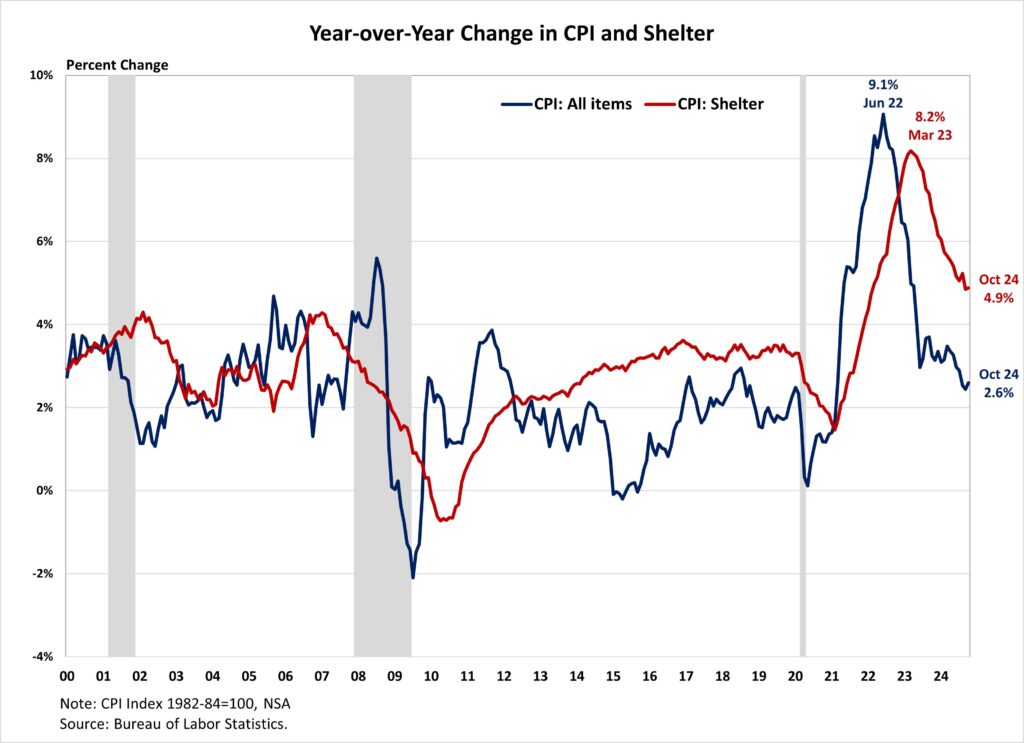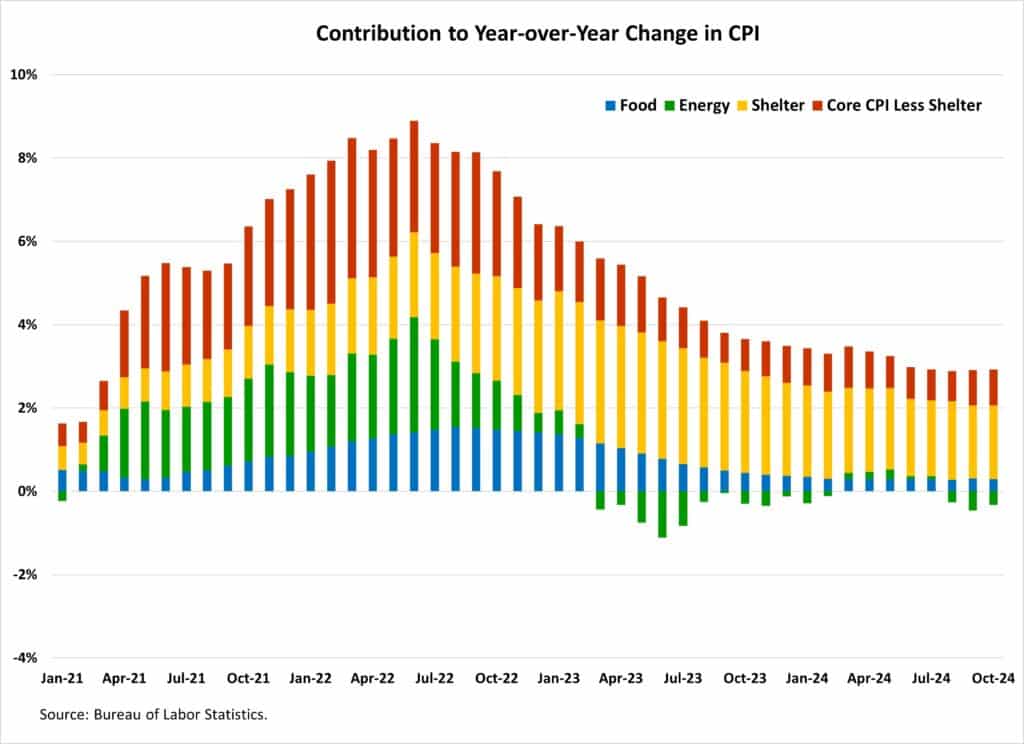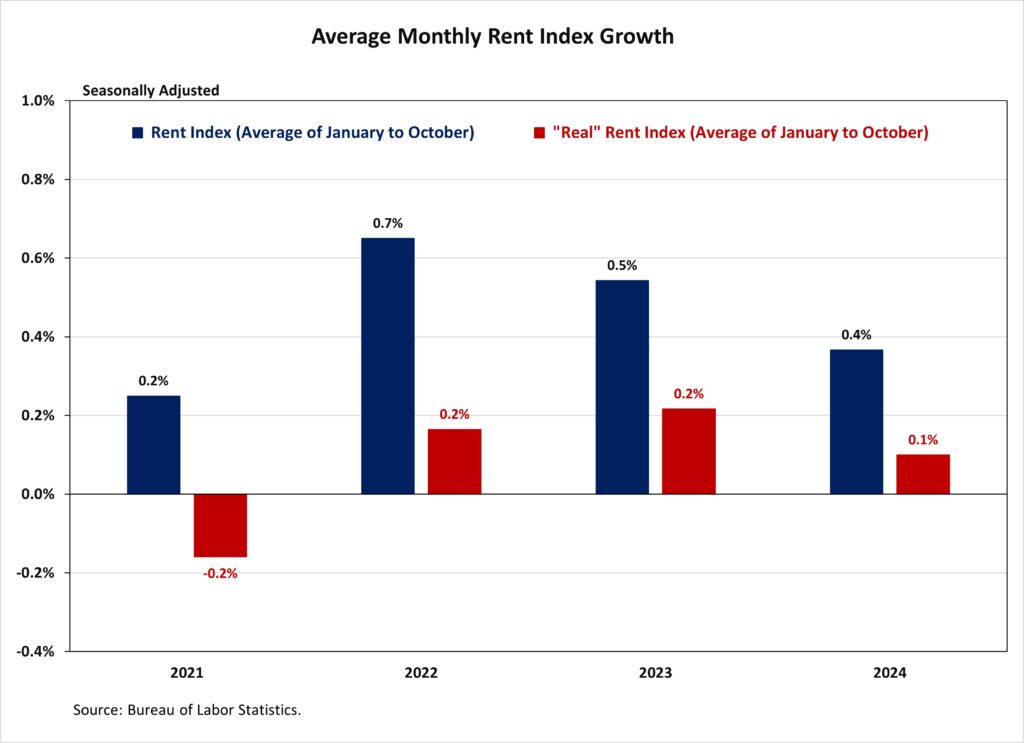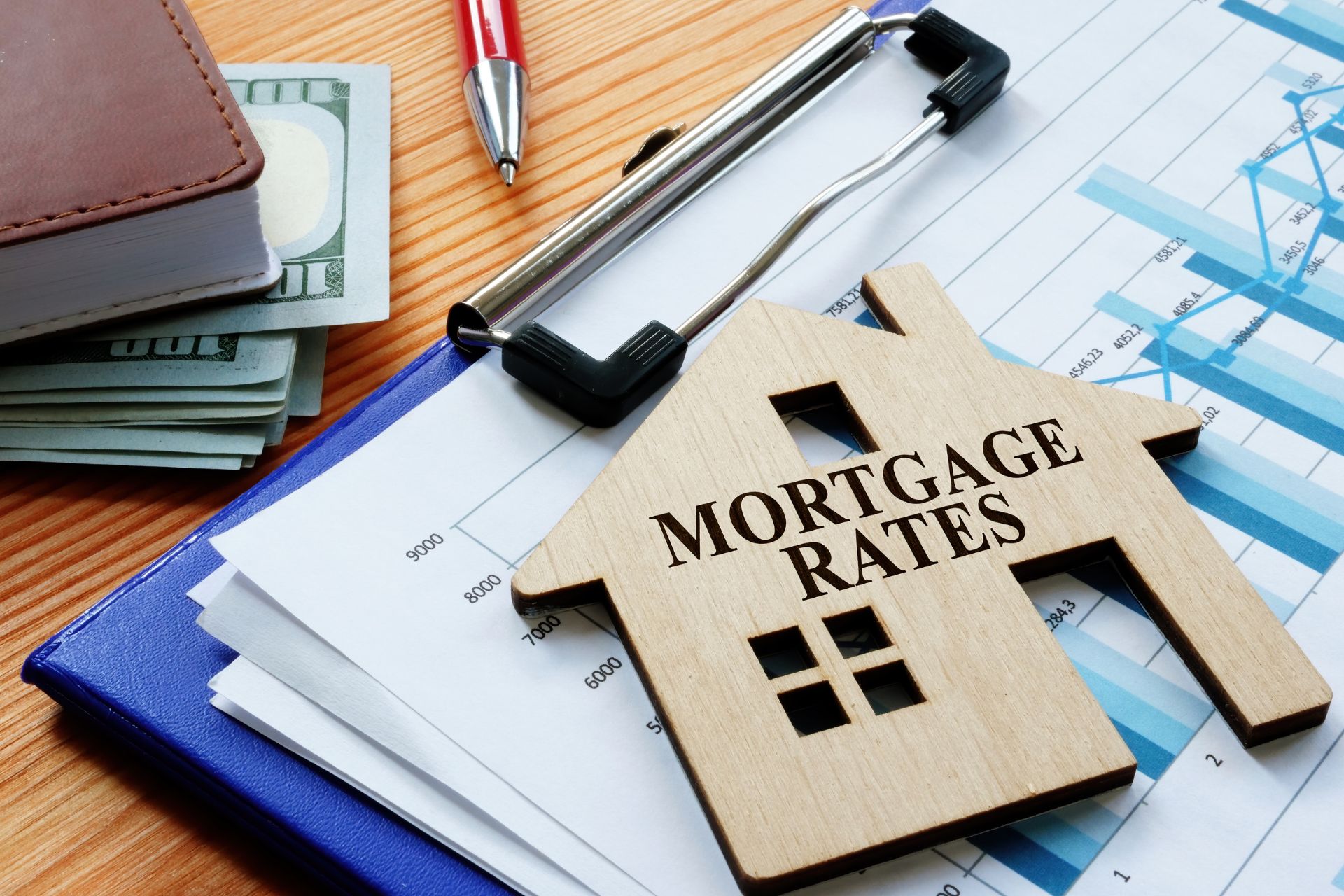Shelter costs inflation has been a significant contributor to overall inflation in recent years, creating ripple effects throughout the economy. As the largest component of the Consumer Price Index (CPI), shelter costs have driven more than 65% of the increase in core inflation (all items less food and energy) over the past year, according to recent data from the Bureau of Labor Statistics and highlighted by Eye on Housing.
How Shelter Costs Impact Inflation
Shelter inflation, which includes rent and housing-related expenses, has been consistently high even as other inflationary pressures ease. In October 2024, shelter costs rose by 0.4%, accounting for more than 50% of the total CPI increase. The year-over-year change in the shelter index has started to show signs of moderation, dropping below 5% for the second consecutive month. Despite this, shelter inflation remains elevated, underscoring its influence on overall inflation trends.

The Role of the Federal Reserve and Policy Constraints
While the Federal Reserve has made efforts to manage inflation through interest rate cuts, its impact on shelter costs inflation has been limited. Interest rate hikes often raise the cost of financing for housing development, which further restricts supply and ultimately contributes to rising shelter costs. With supply chain challenges and development expenses remaining high, the only effective way to reduce shelter inflation may lie in increasing the housing supply to meet demand.

Broader Economic Implications
The high cost of shelter affects more than just housing. Rising shelter inflation impacts the affordability of various consumer goods and services, with some experts suggesting that without significant policy changes, the affordability crisis could persist. The recent 2024 election has placed a renewed focus on inflation, as proposed policies such as tax cuts and tariffs could add to inflationary pressures.
Eye on Housing reports that changes in shelter inflation are indicative of broader economic trends, and without substantial interventions, the Federal Reserve may struggle to achieve its 2% inflation target.

Shelter Costs Inflation: The Path Forward
Addressing shelter costs inflation will likely require a multifaceted approach. Increasing housing supply, managing development costs, and addressing policy-related constraints are crucial steps to control shelter inflation. As shelter remains a primary driver of inflation, policymakers and the housing industry must prioritize affordability to stabilize the broader economy.
Related posts:
 Affordable Rental Provider Repays $710K to Arlington County
Affordable Rental Provider Repays $710K to Arlington County
 Northern Virginia Housing Market – March 2023
Northern Virginia Housing Market – March 2023
 Supply Skepticism: The Complex Puzzle in US Housing 2023
Supply Skepticism: The Complex Puzzle in US Housing 2023
 Mortgage Rates Drop Below 7%: A Ray of Hope for the Housing Market?
Mortgage Rates Drop Below 7%: A Ray of Hope for the Housing Market?
 Buffalo Housing Market: A 2024 Success Story of Growth and Affordability
Buffalo Housing Market: A 2024 Success Story of Growth and Affordability



